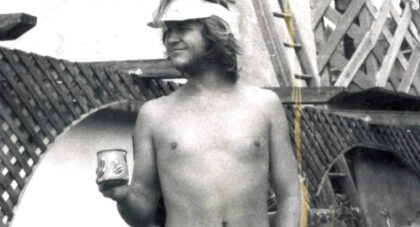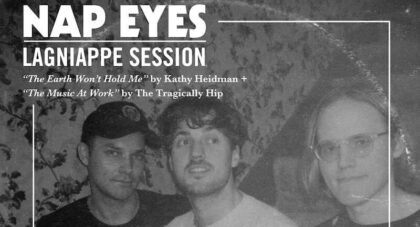I found my copy of Scott Fagan’s lp South Atlantic Blues at a used record shop about 12 years ago. It looked too good to be true, sitting in front of The Nightfly (note: Donald’s surname is Fagen with an ‘e’). The back jacket noted a shared producer with Pearls Before Swine (Elmer Jared Gordon), thanked his drinking partner (also his co-writer, Joe Kookoolis), and gave an “island toast to Victor Brady and his steel pans.” I was sold. When I put the record on, it was nothing like what I expected and much better for it. Not really a folk-y album, it was more abstract, and Fagan sounded desperate and dramatic, like Arthur Lee or Scott Walker. The choruses opened up like a minimalist version of The Left Banke. It sounded like a record that would have been on ESP-Disk or Elektra, not ATCO.
My 2003 Google search yielded more mystery than answers. He recorded a second album, Many Sunny Places (RCA, 1975), influenced by growing up in the Virgin Islands. He co-wrote a rock opera, Soon, starring Richard Gere and Nell “Gimme A Break!” Carter that ran briefly on Broadway, he was mentored by Doc Pomus, and he is the biological father of Stephin Merritt of The Magnetic Fields. And, it turns out I wasn’t his first superfan: Jasper Johns created a lithograph inspired by South Atlantic Blues, titled Scott Fagan Record. Art inspired by his music has hung in the MOMA and the Met, and South Atlantic Blues sits in bins forgotten? Until now.
The liner notes to this, the 2015 reissue, are extensive, including an interview between Fagan and Merritt, and other articles (The Guardian, Yahoo News , The Village Voice) have already done a great job of discussing the record’s history. So here are the highlights from my hour and a half conversation with Fagan. The bits where we talk about the weather, agree on our mutual worldview complaints, and my gushing have all been removed. I don’t know why or what I have to gain from being on the other end of a telephone with a musician I admire, other than sometimes you hear a record you love so much that you want more. South Atlantic Blues is that kind of record.
Aquarium Drunkard: You were discovered by Doc Pomus when you came to NYC from the Virgin Islands. In the liner notes, it says your mother gave you his phone number. Pomus was one of the biggest songwriters in the world at that time. Why did your mom have his number?
Scott Fagan: My father was a jazz musician. My mom’s twin sister was a visual artist. We went to St. Thomas because there was an arts colony there. This number came to her through a friend, who was friend of a friend of a guy. Doc was anonymous at the time. I call him when I get to New York, and he said, “Come on over to the hotel”. He was at the Forrest Hotel, so I have a sense that he is important. I walked in the Forrest Hotel, and Doc is sitting on this triple bed, wrapped in a sheet like a Roman toga dude. He beckoned me to foot of his bed, and said, “Let me hear what you got.” I sang a couple songs I had written, and when I was done, he signed me to his production company and gave me a room. Doc said go on over to Associated Studio and record those songs. Doc wanted me to get comfortable in the studio. While we were preparing for the record, I was signed by Columbia, Bang, Dot, Atco [for singles].
AD: One of those songs you wrote with Pomus (and his partner, Mort Shuman), “Cry ‘Til My Tears Come Dry,” was recorded by Irma Thomas (and later Linda Ronstadt). Did you imagine yourself making a living as a staff writer or did you always want to be a recording artist?
Scott Fagan: I viewed myself as a singer, but I started to write at 9 years old. I knew I had enough to say and needed to learn to write.
AD: You have such a distinct vocal delivery. Who were the singers you admired at the time?
Only the good shit. Aquarium Drunkard is powered by its patrons. Keep the servers humming and help us continue doing it by pledging your support.
To continue reading, become a member or log in.


